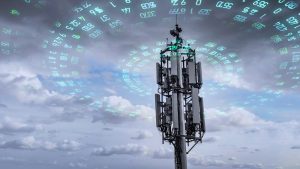5G Wireless Technology: The Future of Public Connectivity and Beyond

It is common to see people using their mobile devices in crowded public places such as stadiums, theaters, casinos, and hotels. These big venues can support high-speed wireless connections through WiFi and cellular networks. Cellular networks, primarily 4G, provide:
- Unquestionable authentication.
- Secure SIM card security over large networks.
- Flexible coverage for all spaces.
These networks are supported by a Wireless distribution system (WDS) that connects to a head node and the primary network. 4G/LTE is previous to the latest generation of cellular technology. 5G offers much more for outdoor and indoor communications, especially in large settings such as football stadiums.
Traditional Networks
Traditionally, networks have taken three steps in their development; First, the manufacturers and telcos deploy the networks to work outdoors and in larger environments fully. These manufacturers follow this up by making the networks available offline for indoor areas such as houses and stadiums.
The last step usually involves network optimization while vigorously planning for the next generation of networks. This last step is the main reason we have exceptionally short 4G, while users of 5G networks complain about accessibility.
The 5G networks are still in their first stage, and we expect a lot of development on 5G in the next few years as manufacturers, businesses, and telcos rush to adopt the super-fast network. 5G networks are approximately 100 times faster than 4G networks, with endless possibilities.
5G Will Change Everything
5G will not only make your Twitter and YouTube load fast, but it will also enable a host of technologies that require high speed, such as Metaverse and self-driving cars. However, the massive advantage that 5g offers is latency.
Low latency and the Future of technology
5G latency is significantly lower than 4G latency. Latency is the time it takes for one packet of data to be transmitted from one device to another, and a lower latency means that this process is faster. This latency is important for applications requiring quick response times, such as online gaming or virtual reality.
Several factors contribute to the lower latency of 5G. One is the use of a higher frequency band for data transmission. 5G uses millimeter wave bands, which have a higher frequency and can carry more data but also have a shorter range. This statement means that more base stations are required to cover an area, which can help reduce latency by reducing the distance data travels.
5G Technology and Crowded Areas
5G technology has the potential to improve connectivity in crowded public spaces such as football stadiums. With its ability to provide faster speeds and lower latency compared to 4G networks, 5G can support many devices and users without experiencing lag or slowdowns.
According to John Saw, EVP of Advanced & Emerging Tech at T-MOBILE, 5G has the potential to support a high density of devices, provide faster speeds and lower latency, and offer more reliable connectivity in such environments.
In addition, this network could enable new experiences like immersive video and enhance the efficiency and effectiveness of everyday operations, like point-of-sale transactions and access control.
5G technology will bring about major changes and advancements in multiple industries, transforming how we live and work,” says Hans Vestberg, CEO of Verizon Communications, at this year’s CES. From super-fast mobile broadband speeds to improved connectivity, coverage, and increased capacity. With low latency, 5G will bring about a new digital transformation era.




